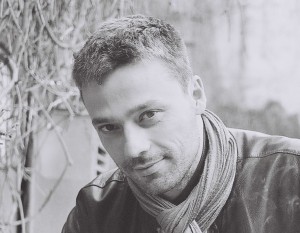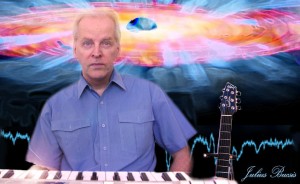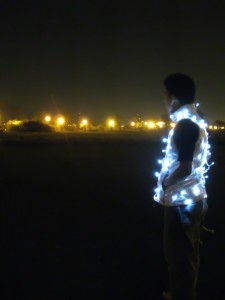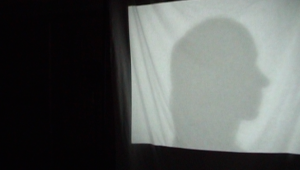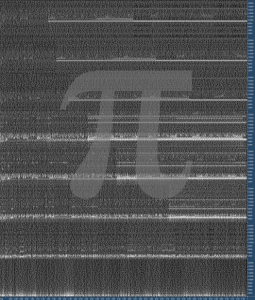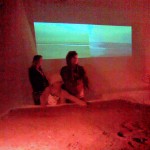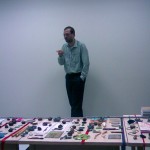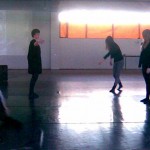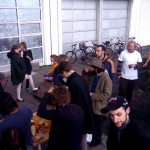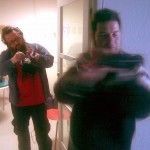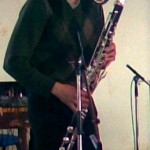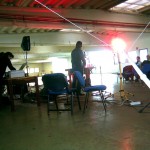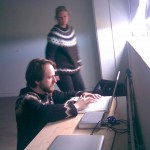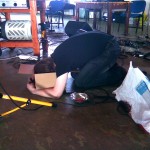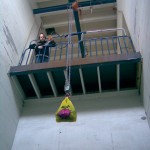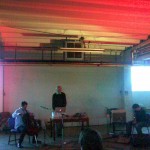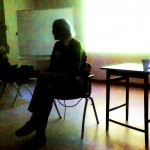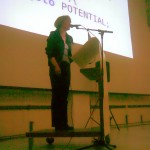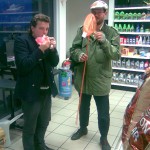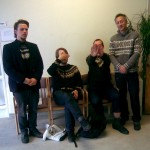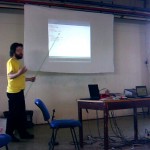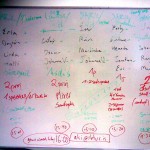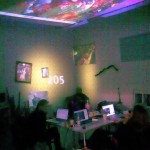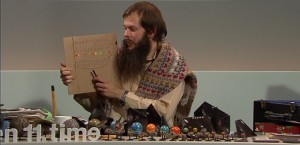POSTRIBOLO: Substitution of original soundtrack of the scene “Le case di Tolleranza” from the movie “Roma” (1972) by F. Fellini with an original soundtrack made up with sounds of coins. The main idea is based on the use of the sound produced by coins: 1 cent, 2, 5, 10, 20, 50 cents of € and 1,2 €.
Coins were “played” for a training period until it was decided to use 4 categories of sounds:
- “Ruotii”: coins were kindly thrown onto a wooden surface till they falls;
- “Sfregolii”: coins ( in a range from 2 to 8 ) are rubbed in the hands;
- “Splash”: coins are dropped from a height of ~20 cm. inside an aluminum pan (diameter ~22cm., height ~12 cm.) filled with 2 liters of water;
- “Percorsi acquosi”: in the same pan filled with 2 liters of water, coins ( in a range from 2 to 8 ) are put under the water surface. The pan is gently shacked, holden by the 2 pan handles, while coins covered the pan bottom.
The substitution of original soundtrack of the scene with an original one made up with sounds of coins follow up a thorough analysis of the scene (editing, narrative rhythm, characters, cinematography, etc…)
Paolo Girol (1972, Venice, Italy) studied mandolin and classic guitar with Livio Marcolin and attended master classes with Emanuele Segre and Alvaro Pierri and studied Computer Science with Andrea Sgarro at the University of Trieste. He has got two A. A. degrees: “Sound Engineer” and “Sound Recording Techniques for Musicians”. He obtained his Bachelor Degree in “Music and New Technologies” from Academy of Music of Trieste and his Master Degree in “Audio Visual Composition” from the same institution. His interest is the hybridization of different artistic languages. His works have been played nationally and internationally, they have been selected to several festivals/conferences and they have been awarded with national and international prizes such as First Prize in “Multimedia & Musical Arts” for Best Italian Digital Composition in Musical Field 2006 and First Prize “Work for multimedia”, International Competition of Electroacoustic Music and Sonic Art 2005, IMEB, Bourges, France. He teaches “Sound Recording” at the Baltic Film School and “Fundamentals of AudioVisual art” at the Estonian Academy of Music. http://paologirol.com/
